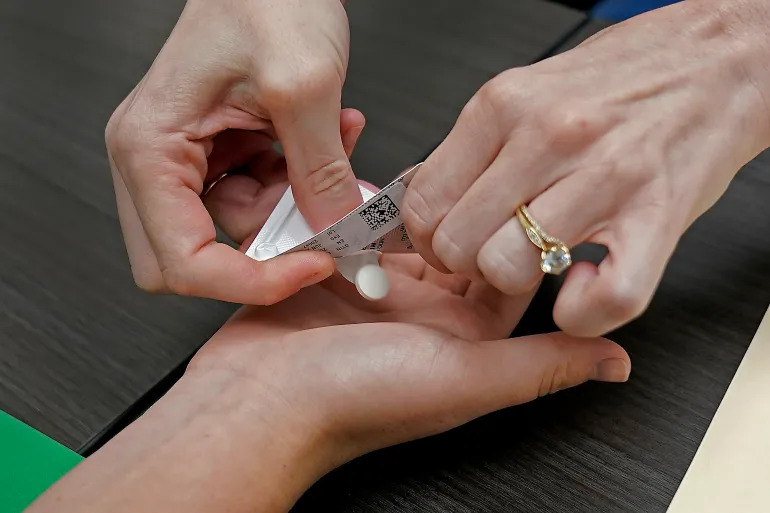The mifepristone pill, one of the drugs used in half of all abortions in the United States, would be subject to limitations under a lower court decision that has been blocked by the US Supreme Court while legal action is ongoing.
The succinct, paragraph-long order lifts any limits and gives the Democratic President Joe Biden’s administration and mifepristone’s producer Danco Laboratories, which had challenged the lower courts’ rulings, a triumph.

The stakes for women in America “could not be higher,” he said, vowing to combat “politically driven attacks on women’s health.”
“But let’s be clear – the American people have to keep to use their vote as their voice and elect a Congress who will pass a law restoring the protections of Roe v Wade,” Biden said, referencing a pivotal 1973 Supreme Court decision that upheld the constitutional right to abortion for nearly 50 years.
In June 2022, the precedent was reversed by the court’s present conservative six-to-three majority.
Numerous Democrats and pro-abortion activists also applauded Friday’s ruling, but they were eager to point out that it was just a temporary fix while the legal dispute over the availability of mifepristone was still pending.
Elizabeth Warren, a senator from Massachusetts, posted on Twitter that “this fight is not over.” Extremist Republican legislators keep undermining women’s freedom to choose their own medical providers across the country.
As appeals continue to consider the federal clearance of mifepristone, the Supreme Court’s decision on Friday is probably going to leave access unaltered at least until next year.
However, the court’s decision to maintain access to mifepristone on Friday was rejected by conservative justices Clarence Thomas and Samuel Alito.
Alito rejected worries that “regulatory chaos” might develop if the Supreme Court upheld the limitations on mifepristone in his opinion.
A lower court in the case had already criticized the US Food and Drug Administration (FDA), the organization that authorized mifepristone in 2000, for “evading both necessary agency procedures and judicial review”. He also charged the FDA with doing the same.
Alito stated in his dissent that the proposed limits would “simply restore the circumstances that existed” from 2000 to 2016 and that the petitioners “are not entitled to a stay at this time because they have not demonstrated that they are likely to suffer irreversible damage in the interim.”

On April 7, US District Judge Matthew Kacsmaryk accepted an anti-abortion plaintiffs’ request to temporarily halt the FDA’s clearance of mifepristone while he considered whether the agency made a mistake when it approved the drug more than 20 years ago.
One of the plaintiffs in the FDA lawsuit against the FDA’s approval of mifepristone was a group opposed to abortion rights known as the Alliance for Hippocratic Medicine.
Mifepristone would have been essentially withdrawn from the US market thanks to Kacsmaryk’s injunction. However, before the injunction went into force, his judgment gave the Biden administration seven days to file an appeal.
On April 12, the administration’s appeal brought the matter before the 5th Circuit Court of Appeals in New Orleans, LA, which maintained limits from Kacsmaryk’s ruling that would have reduced access to 2016 standards while also maintaining the availability of mifepristone.
In accordance with such limitations, the FDA permitted the use of mifepristone up to 10 weeks of pregnancy in the past, but only up to seven weeks in the present. It would also prevent mifepristone from being supplied over the mail and needing repeated in-person medical appointments.
Check Previous Article: Arsenal suffers a championship blow, Despite saving a thrilling 3-3 draw with Southampton

My name is Guru, and I am a digital marketer, content writer, creator and teacher. My role at Breaking News Live 24 is to bring you all the latest news from the world of business and finance so that you can get every information related to it, Thank you!
 Breaking News Live 24
Breaking News Live 24


